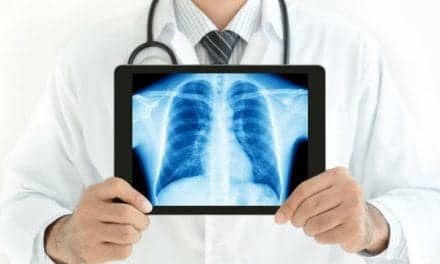Wayne, N.J.-based Konica Minolta Healthcare has unveiled a product that helps clinicians visualize movement using conventional x-ray. Known as Dynamic Digital Radiography (DDR) or X-ray in Motion, this new modality captures movement in a single exam and allows the clinician to observe the dynamic interaction of anatomical structures, such as soft tissue and bone, with physiological changes over time.
The value of DDR in thoracic imaging is promising, Konica Minolta officials say, allowing clinicians to observe chest wall, heart and lung motion during respiration. Moreover, DDR goes beyond pulmonary function; Konica Minolta is exploring its use in orthopedic applications of the spine and extremities.
“DDR may dramatically change the diagnostic and patient management paradigms for respiratory diseases and other pathologies including orthopedic injuries,” says Kirsten Doerfert, senior vice president of marketing, Konica Minolta Healthcare. “With x-ray images in motion, clinicians can see structures in a way they have never been able to see before, enhancing their ability to better manage patients based on individual characteristics and bringing precision medicine further into focus for radiology.”
Konica Minolta officials say DDR is an enhanced version of a standard DR system that acquires up to 15 sequential radiographs per second for up to 20 seconds of physiological movement, resulting in 300 x-ray images with a dose equivalent to about two standard x-rays. Even so, the DDR system performs all conventional x-ray studies, as well as motion radiographic studies.
“We are enabling clinicians to see more than a static image,” says Guillermo Sander, director of marketing, digital radiography, Konica Minolta Healthcare. “By digitally capturing movement, DDR may deliver quantifiable clinical information that has the potential to increase the quality and specificity of diagnosis. With DDR, clinicians may better understand the pulmonary effect of neuromuscular disorders, diagnose and manage patients with respiratory conditions, such as asthma or chronic obstructive pulmonary disease, and evaluate post-operative changes in patients with lung cancer, lung cysts and other pathologies.”






